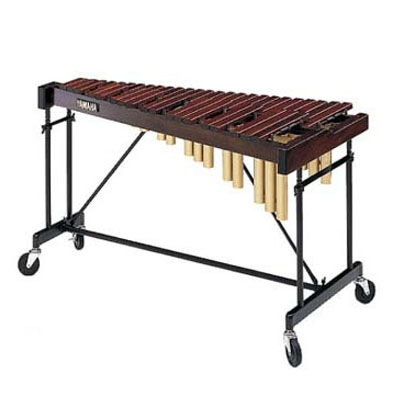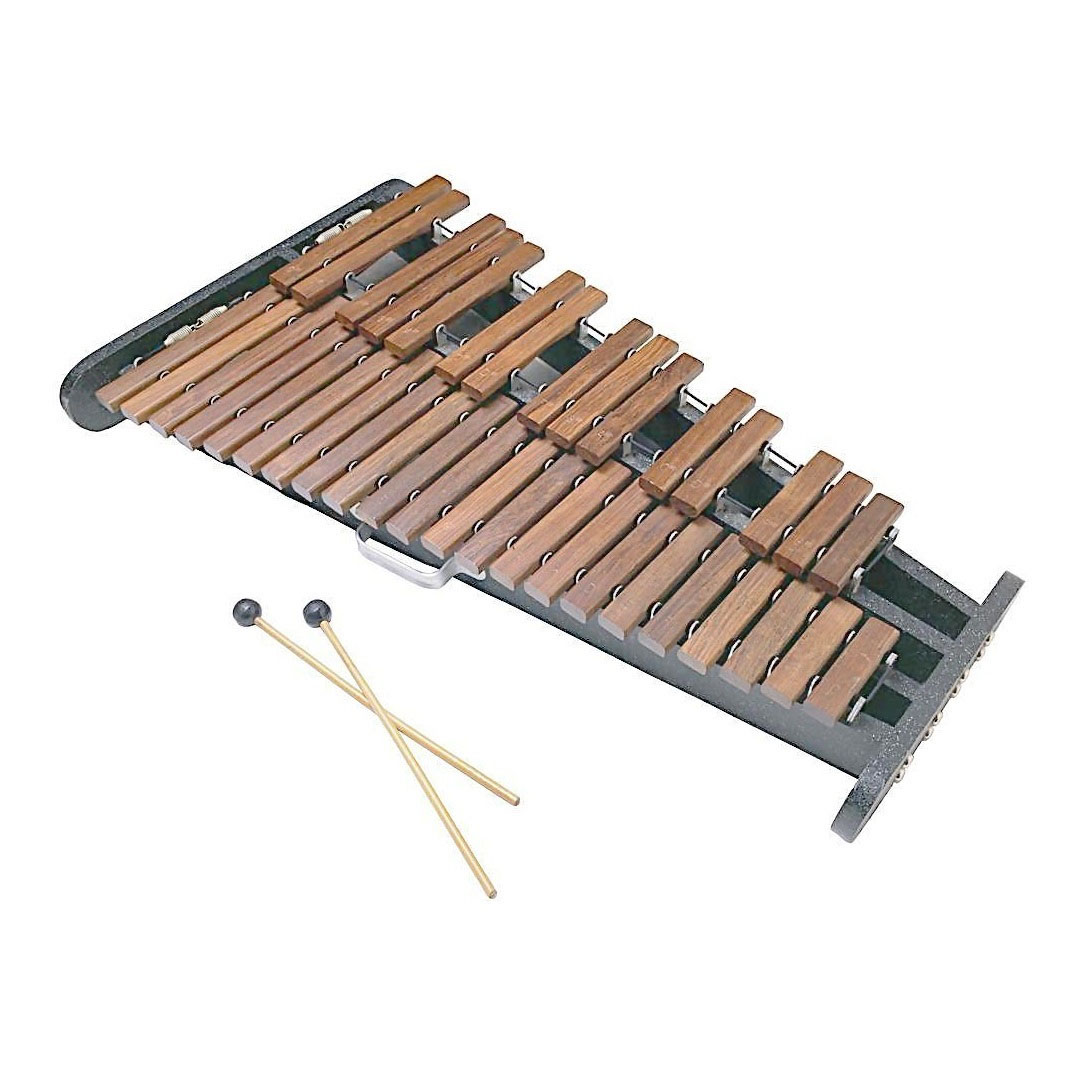The structure of the xylophone
722 views · Organized by 拙 on 2022-02-08
The basic structure of the xylophone is composed of several long and short hardwood sound bars arranged in parallel on a shelf. Band xylophones come in two forms. The more common one is the vertical type. That is, the sound bars are arranged in two columns like the black and white keys of a piano, and there is a metal resonance tube under each sound bar. The sound range is generally C(4)/C(8) or F(4)/C(8), and the real sound is an octave higher than the notation.
The basic structure of the xylophone is that several sound bars of different lengths are arranged in a certain order. A wooden or metal pipe is placed under each sound bar as a resonator, and the sound range is three and a half to four octaves. The xylophone is played with two wooden mallets on the sound bar, and the sound is cool and has a frozen texture, which can be used for solo performance.

sound bar (key)
The keys used in the xylophone are all made of wood chips. The most commonly used is mahogany, and trees with better wood such as red sandalwood are also used. The commonly used materials are tropical mahogany and rosewood and other hard materials. It is because of this hard texture that the sound it emits is more crisp and loud. In modern times, glass fibers or reinforced plastics have also been used to make the sound louder and stronger, and the cost is cheaper than that of logs, but it lacks the unique echo and resonance of trees, and the natural A kind of resilience produced by fibers. For ordinary listeners, it may not be possible to tell the difference, but professional players can clearly feel the difference. The cut pieces of wood are strung with elastic ropes, and then put on small hooks for fixing.piano stand
The metal texture of the frame varies depending on the size of the instrument, accessories and other factors. The thinner type is only inlaid on the outer frame and has no feet; the larger type, the keys are mounted on a frame with wheels for easy pushing.Resonator
The round thin aluminum tubes of different lengths are installed under each sound bar, which acts as a resonance box for a stringed instrument, so that the sound emitted by the sound bar can be enhanced and extended; Or a metal pipe to replace the gourd as a resonator.hammer
A pair of spoon-shaped wooden chutes, mostly made of mahogany. Used to hit the sound bar to produce sound.

The basic structure of the xylophone is that several sound bars of different lengths are arranged in a certain order. A wooden or metal pipe is placed under each sound bar as a resonator, and the sound range is three and a half to four octaves. The xylophone is played with two wooden mallets on the sound bar, and the sound is cool and has a frozen texture, which can be used for solo performance.
Involving musical instruments
The xylophone (pinyin: mù qín) is a percussion instrument composed of a set of small rectangular wooden blocks. According to the length of the wooden blocks, these wooden blocks are arranged in a certain order. When playing, two wooden mallets are tapped on the wooden block, making a dry percussion sound that is slightly like a bone. The sound quality is strong and harsh, and it has extraordinary penetrating power.
Guess you like
Organized by 蕾伊 on 2022-02-08
The xylophone is played with two-handed small hard or soft hammers. When played with a hammer, it can produce a woody, hard and cold, less reverberating, high-cold, crisp, and granular sound, which is very suitable for playing various forms of scales, arpeggios, glissando, vibrato, rolls, doubles. Tricky phrases for pitching, jumping in, and even jumping in from a distance.
read >>
Organized by 关谷奇迹 on 2022-02-08
At present, the xylophones used in our country can be divided into two types according to their shapes: one is called trapezoid or grand piano, and the other is called horizontal row Qin or marimba. The arrangement and playing methods are quite different. A brief introduction is given below.
read >>
 渝公网安备 50010702504639号
渝公网安备 50010702504639号